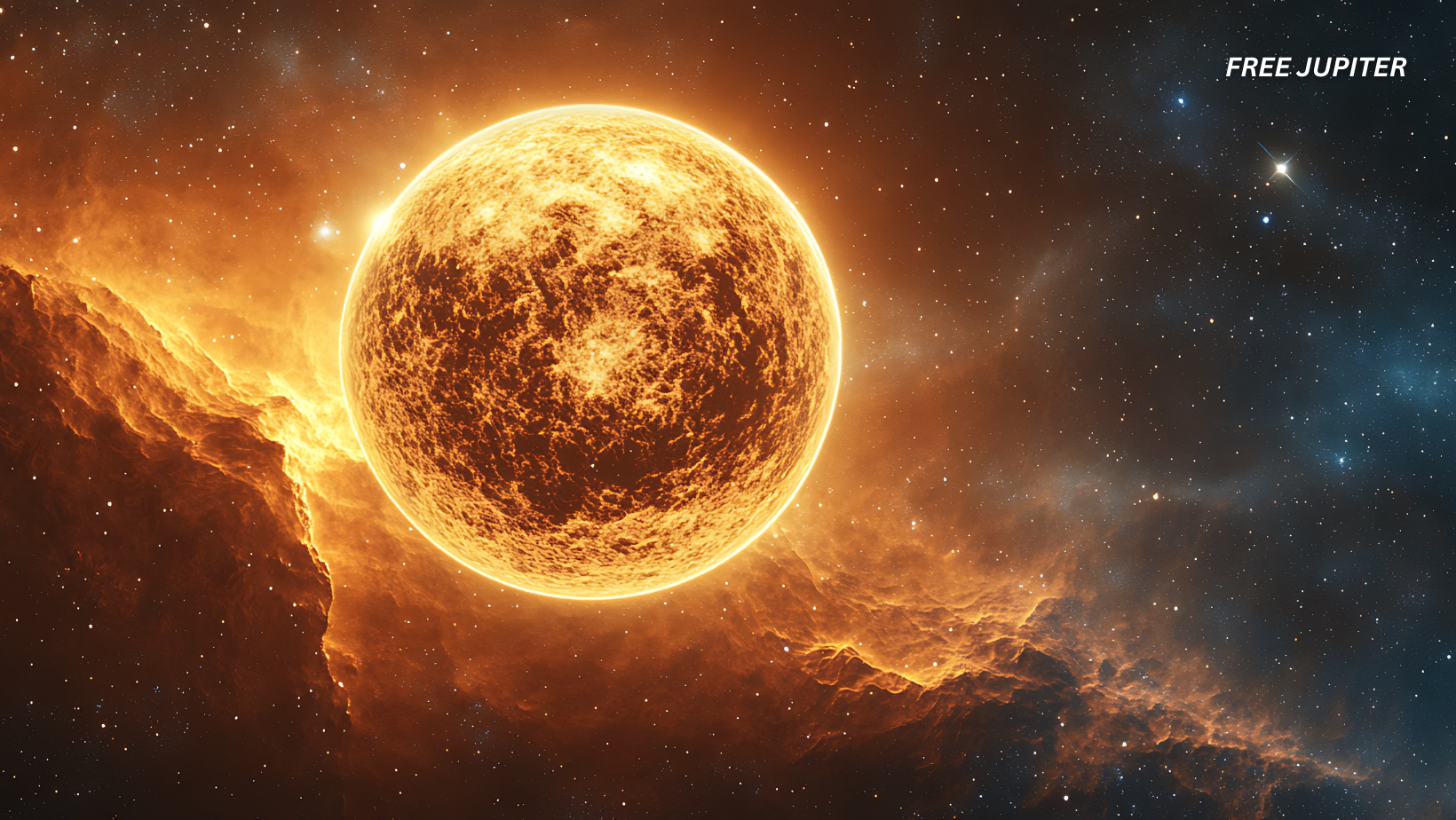Friendly Note: FreeJupiter.com shares general info for curious minds 🌟 Please fact-check all claims—and always check health matters with a professional 💙
In the grand cosmic neighborhood, Alpha Centauri is the friendly next-door star system—if “next door” means more than four light-years away. It’s our closest stellar neighbor, yet still far enough that even a quick visit would require technology humanity hasn’t mastered yet. Now, this familiar star may have given astronomers a reason to get even more curious.
Thanks to the remarkable vision of NASA’s James Webb Space Telescope (JWST), scientists believe they might have spotted a gas giant orbiting Alpha Centauri A. While that might not sound like a big deal at first—after all, gas giants are relatively common—this one may sit in just the right place for something much more exciting. If it has the right kind of moons, one of them could potentially be habitable.
The discovery has already been compared—half-jokingly, half-seriously—to Pandora, the lush alien moon from James Cameron’s Avatar films. And while the odds of finding flying creatures or blue-skinned humanoids are, to put it mildly, slim, the possibility of a habitable world in the nearest star system to Earth is enough to make scientists’ hearts race.
A Star You’ve Heard of Before
Alpha Centauri is actually a small family of stars. The two brightest members, Alpha Centauri A and Alpha Centauri B, are very similar to our Sun. A third, much smaller star called Proxima Centauri, orbits farther out and is already famous for having its own potentially habitable planet.
Alpha Centauri A, the star in question here, is slightly larger and more luminous than the Sun. From Earth’s southern hemisphere, it appears as one of the brightest points of light in the night sky. Its proximity, brightness, and similarity to our Sun make it an irresistible target for astronomers looking for planets.
The problem? Alpha Centauri A and B orbit each other fairly closely. This creates two big challenges:
- Blinding brightness – The glare from these stars overwhelms telescope instruments.
- Gravitational chaos – Their tug-of-war can distort or hide the signs that a planet is there.
For decades, these issues made planet-hunting in the Alpha Centauri system frustratingly difficult.
Read more: Scientists Claim a Real-Life Warp Drive Is Now Possible — No, This Isn’t Sci-Fi
Enter the James Webb Space Telescope
JWST was built to handle challenges like this. Unlike most previous telescopes, it observes in the infrared spectrum, which can cut through glare and detect faint signals from planets and moons.
It also uses coronagraphs—light-blocking masks that hide the direct glare of stars, allowing astronomers to see what’s nearby. Imagine trying to spot a firefly hovering next to a floodlight; JWST can shade the floodlight just enough for the firefly to stand out.
In this case, the “firefly” might be a gas giant about the size of Jupiter or Saturn. It appears to orbit Alpha Centauri A within its habitable zone—the Goldilocks region where temperatures could allow liquid water to exist.
Gas Giants: The Unexpected Key to Life?
If you’re imagining a new Earth, here’s the first twist: this candidate planet is probably not habitable itself. Gas giants don’t have solid surfaces—just deep atmospheres of hydrogen, helium, and other gases. Standing on one would be impossible, unless you enjoy falling through clouds for eternity.
But gas giants often have moons—sometimes dozens of them. In our own solar system, moons like Europa (around Jupiter) and Enceladus (around Saturn) have oceans beneath icy crusts, even though they’re far from the Sun’s warmth. Some moons, like Titan, have thick atmospheres and complex chemistry.
If this planet near Alpha Centauri A has large moons—maybe even Mars-sized ones—and if those moons orbit in just the right way, they could have stable climates and potentially liquid water. Those are two of the main ingredients for life as we know it.
The Scientific “If” Chain
As exciting as this is, scientists are careful to point out that this is far from a confirmed discovery. Think of it as a ladder of “ifs” that must be climbed before anyone starts dreaming about building a spaceport:
- If the planet truly exists (more observations are needed to confirm it).
- If it has moons.
- If one of those moons is large enough to hold onto an atmosphere.
- If that atmosphere is stable and protective against radiation.
- If there is liquid water.
- If the chemistry is right for life.
That’s a lot of “ifs”—but every major discovery starts with one.
Read more: Humans Have Lost 60% of Their Connection With Nature in Just Two Centuries, Study Shows
Why This Matters So Much
Finding a potentially habitable moon in the Alpha Centauri system would be a game-changer for astronomy. For decades, most exoplanets (planets outside our solar system) we’ve found have been located dozens, hundreds, or even thousands of light-years away. Those worlds are fascinating, but too far to realistically visit in the foreseeable future.
Alpha Centauri is different. At just 4.37 light-years away, it’s practically on our doorstep in galactic terms. With future advances in propulsion technology—such as nuclear-powered spacecraft or light sails—missions to Alpha Centauri could be possible within the next century.
Lessons from Pandora and Fictional Worlds
When Avatar first hit theaters in 2009, its Pandora was set in the Alpha Centauri system. At the time, we had no real evidence of habitable worlds there—it was pure imagination. But science has a habit of catching up to fiction.
Pandora’s lush forests, glowing plants, and dramatic floating mountains might remain firmly in the realm of art and special effects. However, the concept of a habitable moon orbiting a gas giant in another star system is grounded in real science. In fact, some scientists believe moons could outnumber habitable planets in the galaxy.
What Comes Next
To confirm this planet’s existence, astronomers will need repeated observations. They’ll be watching how light from Alpha Centauri A changes over time, looking for the subtle patterns that signal a planet’s orbit.
If it’s confirmed, the next step will be to search for moons—a task even harder than finding the planet itself. It will require even more sensitive instruments and clever techniques, possibly from telescopes that haven’t been built yet.
And if one of those moons looks promising, the big question will be: how do we study it up close? For that, humanity may need to develop spacecraft that can travel much faster than anything we have today.
The Broader Picture
This potential find is part of a much larger trend in astronomy: the shift from just finding exoplanets to characterizing them—learning about their atmospheres, temperatures, and potential habitability. JWST is already making progress in studying the atmospheres of distant worlds, detecting molecules like water vapor and carbon dioxide.
The discovery also highlights the importance of our nearest stars. If life exists beyond Earth, it might not be hiding in a far-off corner of the galaxy, but right next door.
Read more: The Shocking Factor Holding AI Back From Replacing Humans
A Measured Kind of Excitement
It’s tempting to get carried away with visions of alien jungles and otherworldly sunsets. But scientists know better than to make promises too soon. For now, this is a tantalizing hint, not a confirmed reality.
Still, even the possibility that a habitable world—or at least a habitable moon—could be waiting around Alpha Centauri A is enough to stir imaginations. It’s a reminder that our place in the universe is still full of mysteries, and that even our closest neighbors may hold surprises.
One day, perhaps centuries from now, explorers might stand on the surface of an alien moon, look up, and see a massive gas giant hanging in the sky, just as Pandora’s inhabitants do in Avatar. Whether or not that happens, the journey to find out has already begun.










